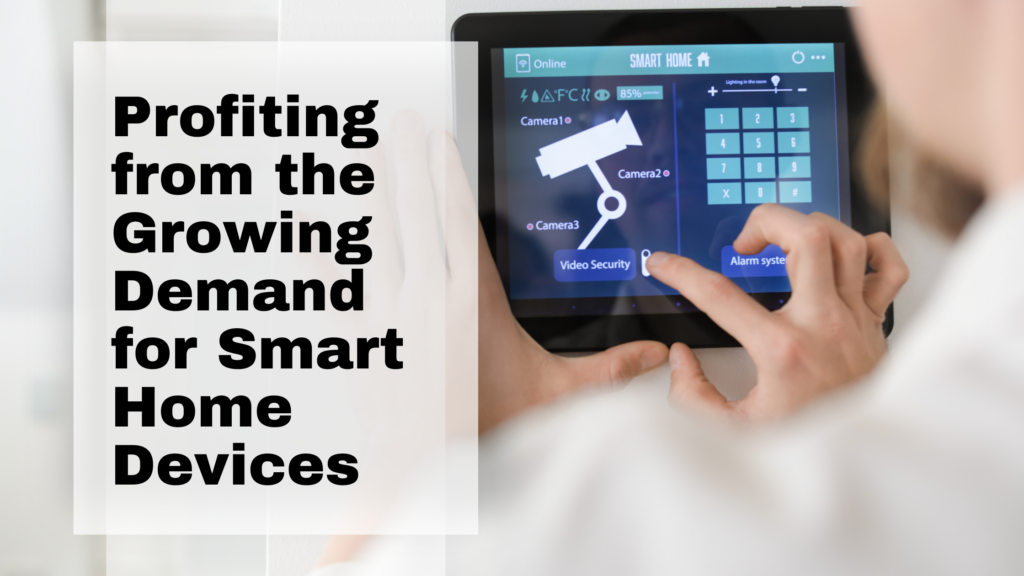Profiting from the Growing Demand for Smart Home Devices
The landscape of home automation is evolving rapidly, with startups at the forefront of creating innovative solutions for smart home devices. These advancements enable seamless wireless communication, transforming individual components into a fully integrated ecosystem. As interest in smart home devices continues to surge, the market is witnessing an increasing demand for devices like robot vacuums, smart locks, video doorbells, and connected appliances. This trend presents a lucrative opportunity for dropshippers to tap into the growing smart home sector. By strategically integrating and managing these smart home ecosystems, businesses can capitalize on this trend, offering consumers the convenience and efficiency that modern smart homes provide.
The Evolution and Adoption of Smart Home Technology
Tracing the journey of smart home technology reveals a fascinating evolution from rudimentary automation to sophisticated, interconnected ecosystems. This transition has been marked by key milestones:
Early Beginnings and Adoption:
- 1939: The concept of automated homes first enters public consciousness through science fiction.
- 1966-1967: ECHO IV and the Kitchen Computer represent early, albeit unsuccessful, attempts at smart devices.
- 1975: The X10 protocol introduces a new era of device communication, laying the groundwork for future developments.
Technological Advancements:
- 1990s: The internet revolutionizes smart home systems with remote access capabilities.
- 2000s: Wireless technologies like Z-wave and Zigbee enable unprecedented smart home functionalities, despite the challenge of competing standards.
Modern Era and Integration:
- 2010s: Voice-controlled assistants and IoT bring smart home technology into mainstream adoption.
- 2020s: The focus shifts towards sustainability and security, with smart homes becoming increasingly accessible and user-friendly.
Notably, the additional instruction concerning dropshippers capitalizing on smart home products does not directly apply to this section, focusing instead on the historical and technological development of smart home devices.
Key Benefits of Smart Home Devices
 Smart home devices have revolutionized the way homeowners interact with their living spaces, offering unparalleled convenience, efficiency, and security. Here are some of the key benefits:
Smart home devices have revolutionized the way homeowners interact with their living spaces, offering unparalleled convenience, efficiency, and security. Here are some of the key benefits:
Increased Efficiency and Convenience:
- Control and monitor your home from a single interface.
- Seamlessly integrate new devices and appliances.
- Automate daily tasks with voice commands or schedules.
Enhanced Security and Safety:
- Connect and monitor security devices like motion detectors and surveillance cameras.
- Receive real-time alerts and security notifications.
- Utilize video motion detection and analytics for precise monitoring.
Energy Savings and Environmental Impact:
- Smart thermostats adjust settings for optimal energy consumption.
- Monitor and manage energy use to identify savings opportunities.
- Automated lights and shades contribute to energy efficiency.
These benefits highlight the importance of smart home devices in creating a more connected, secure, and efficient living environment.
Choosing the Right Smart Home Devices
Choosing the right smart home devices necessitates a strategic approach to ensure seamless integration and functionality within your home ecosystem. Here are key considerations:
Compatibility and Ecosystem Selection:
- Look for logos indicating support with major platforms: Works with Google Assistant, Works with Alexa, or Works with Apple HomeKit.
- Decide on an ecosystem (Amazon Alexa, Apple Home, Google Home, Samsung SmartThings) based on your current smartphone, preferred voice assistant, and desired features.
Key Device Recommendations:
- Security: Ring Alarm Pro, Yale Smart Delivery Box, Arlo Video Doorbell.
- Connectivity: Reyee E6 AX6000 Gaming Router, TP-Link Archer BE800.
- Convenience: Amazon Astro, Lasko AR122 ThermaSmart Heater, Smart light bulbs, Smart locks.
Integration and Management:
- Utilize a smart home platform or hub for centralized control (consider Matter for interoperability).
- Smart speakers and displays (e.g., Amazon Echo, Google Nest Mini) enhance voice control and automation capabilities.
- Ensure a reliable Wi-Fi connection; consider Wi-Fi 6E for high-speed requirements and compatibility with smart devices.
For dropshippers looking to capitalize on smart home products, focusing on devices that offer interoperability, ease of use, and compatibility with popular ecosystems can drive consumer interest and satisfaction.
Integration and Management of Smart Home Ecosystems
The integration and management of smart home ecosystems present a unique opportunity for dropshippers to offer value-added services and products. To ensure seamless operation and user satisfaction, consider the following guidelines:
Hub Utilization for Central Control:
- Employ smart hubs for centralized device management, enhancing the user experience for guests and residents unfamiliar with individual device apps or voice controls.
- Opt for hubs that support various technologies (ZigBee, Z-Wave, Thread) for increased device compatibility and responsiveness.
Wi-Fi and Interoperability Standards:
- Ensure all devices connect via a reliable Wi-Fi network, with Wi-Fi 6E recommended for its speed and capacity to handle multiple smart devices efficiently.
- Adopt the Matter standard to guarantee interoperability among devices from different manufacturers, ensuring a secure and seamless smart home environment.
Smart Device Setup and Security:
- Strategically place devices and maintain a consistent naming convention for ease of use.
- Group devices or organize them by rooms within the smart home ecosystem’s app for streamlined control and automation setup.
- Prioritize devices supporting multi-factor authentication and biometric logins to enhance security.
For dropshippers, focusing on products like robot vacuums, smart locks, video doorbells, and connected appliances that support these integration and management principles can significantly increase appeal to consumers looking for a cohesive and secure smart home experience.
Conclusion
Through the exploration of the evolution, integration, and immense benefits of smart home devices, it becomes clear that we stand at the brink of a technological revolution within our living spaces. From the early beginnings marked by rudimentary automation to the current landscape of highly integrated and sophisticated ecosystems, the journey of smart home technology showcases a consistent drive toward convenience, efficiency, and security. These core attributes not only enhance the way homeowners interact with their environment but also present an invaluable opportunity for businesses, particularly for dropshippers looking to delve into the burgeoning smart home market.




